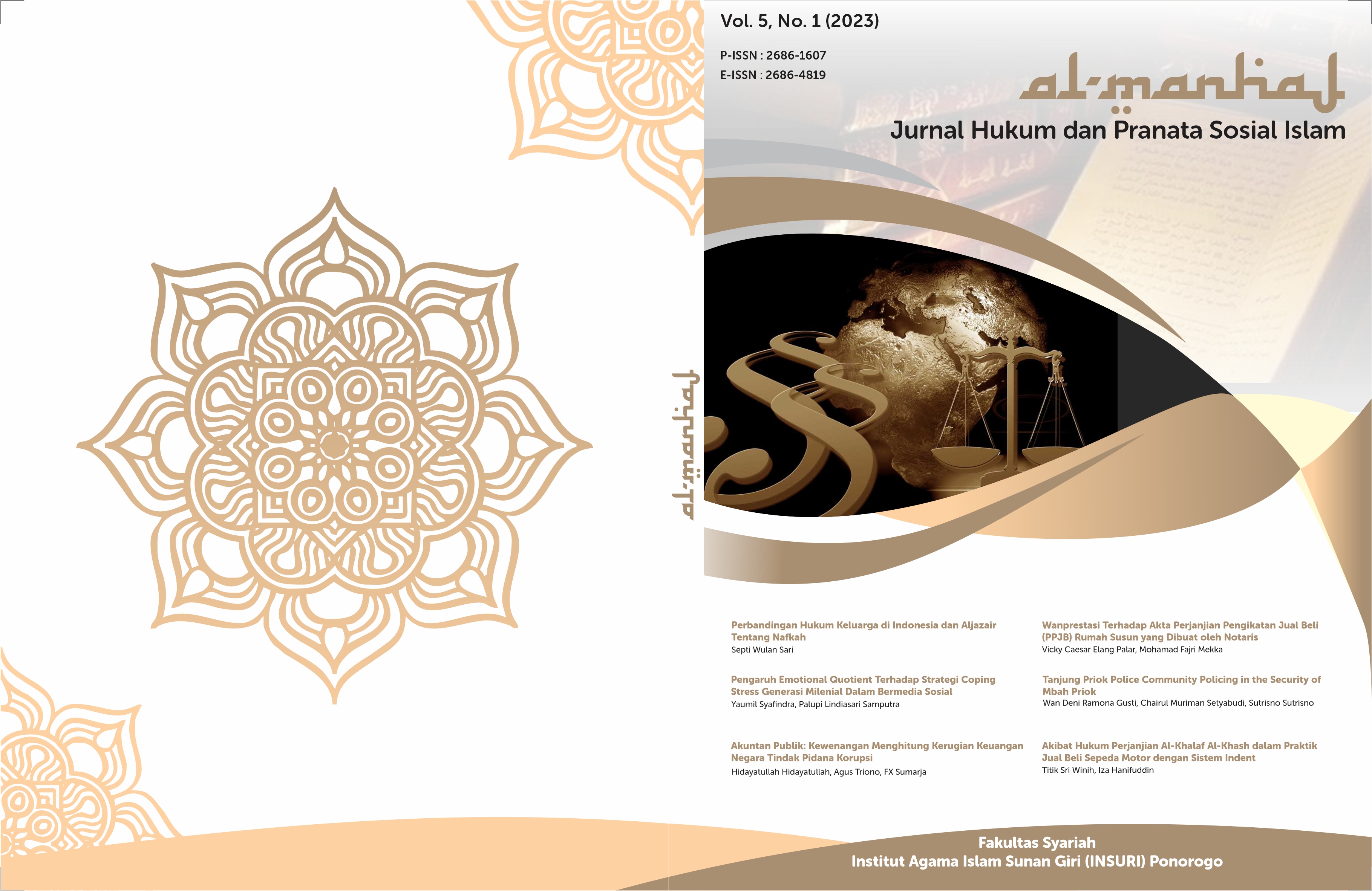Tinjauan Hukum Pemberian Upah Pada Buruh Dibawah Upah Minimum Provinsi
DOI:
https://doi.org/10.37680/almanhaj.v5i1.1997Keywords:
Laborer; Decent Living Needs; Below the Provincial Minimum WageAbstract
Getting a decent job and livelihood is a basic right of every citizen as a citizen that must be obtained. In its implementation, it cannot be denied that there are problems in employment, one of which concerns wages. However, in principle employers are prohibited from paying wages to workers/employees lower than the minimum wage. The purpose of analyzing the implementation of the provision of the minimum wage is expressly regulated in Article 23 paragraph (3) of Government Regulation Number 36 of 2021 concerning Wages as the Implementing Regulation of Law Number 11 of 2020 concerning Job Creation. If in the agreement, the wages paid are found to be lower or contrary to laws and regulations, the agreement may be null and void and the wage arrangements are carried out in accordance with the provisions of laws and regulations. The research method is normative juridical to analyze data by means of literature studies on secondary data which specifically discusses the norms contained regarding the Minimum Wage Provisions. Obstacles in the application of wages, both the UMP (Provincial Minimum Wage) and the UMK (Regency/City Minimum Wage), namely lower and middle-level companies that are unable to carry out the provisions of the UMP and UMK provisions themselves so that there is a gap between workers and companies. Even though the UMP is smaller than the UMK, there are small and medium-sized companies that are unable to provide good wages to workers according to the stipulations of the UMP. The welfare of workers in Indonesia has always increased from time to time because the magnitude of the increase in the minimum wage as a whole is lower than the increase in the price of the minimum necessities of life, so that workers cannot live a decent life.
References
Agus Surya Manika. (2022). Kajian Yuridis Terkait Penentuan Besar Upah Pekerja Berdasarkan Pasal 88 C Undang-Undang Nomor 11 Tahun 2020 Tentang Cipta Kerja. Jurnal Komunikasi Hukum (JKH), 8(2), 628–639. https://doi.org/10.23887/jkh.v8i2.52010
Asyhadie, Z. (2007). Hukum Ketenagakerjaan Bidang Hubungan Kerja. PT. Raja Grafindo Persada.
Imam, S. (2003). Pengantar Hukum Perburuhan. Djambatan.
Khoiriyah, E., Pamungkas, B. P., Hardianti, I., & Zildjianda, R. (2023). Kedudukan Hukum dalam Mewujudkan Keadilan dan Kesejahteraan di Indonesia. 5(1), 241–254. https://doi.org/10.37680/almanhaj.v5i1.2084
M. Quraish Shihab. (2007). Wawasan Al Quran. PT. Mizan Pustaka.
Mahfud, I. (2019). Kompensasi Dan Evaluasi Kinerja Dalam Perspektif Ilmu Ekonomi Islam. Madani Syari’ah, 2, 45–64. https://stai-binamadani.e-journal.id/Madanisyariah/article/download/138/110/
Nurachmad, M. (2009). Cara Menghitung Upah Pokok, Uang Lembur, Pesangon dan Dana Pensiun Untuk Pengawai dan Perusahaan. Visimedia.
Santoso, A. P. A., Suhatmi, E. C., Hastuti, I., & Pamungkas, Z. B. (2021). Analisis Yuridis Pemberian Upah di Bawah UMK Bagi Tenaga Kesehatan di Rumah Sakit. JISIP (Jurnal Ilmu Sosial Dan Pendidikan), 5(3), 1–13. https://doi.org/10.36312/jisip.v5i3.2006
Soedarjadi. (2009). Hak dan Kewajiban Pekerja-Pengusaha. Pustaka Yustisia.
Supono. (2014). Menuju Pengadtlan Hubungan Industrial (Phi)Yang Cepat, Tepat, Adil Dan Murah. Kajian, 19(2), 107–126.
Tasbih. (2016). Amal Shaleh Menurut Konsep Al-Qur’an. Tafsere, 4(2), 7.
Trimaya, A. (2014). Pemberlakuan Upah Minimum dalam Sistem Pengupahan Nasional untuk Meningkatkan Kesejahteraan Tenaga Kerja. Aspirasi: Jurnal Masalah-Masalah Sosial, 5(1), 11–20.
Wahyu Hanafi, N. (2019). Teori Medan Makna Dan Kontekstualitas Hukum Islam Kontemporer: Reinterpretasi Hadis-Hadis Etika Ekonomi Islam Dalam Wacana Semantik. AL-MANHAJ: Jurnal Hukum Dan Pranata Sosial Islam, 1(1), 93–107. https://doi.org/10.37680/almanhaj.v1i1.111
Waliam, A. (2017). Upah Berkeadilan Ditinjau dari Perspektif Islam. Jurnal Birsnis Dan Manajemen Islam, 5(2), 265–292.
Downloads
Published
How to Cite
Issue
Section
License
Copyright:
- Author retains the copyright and grants the journal the right of first publication of the work simultaneously licensed under a Creative Commons Attribution 4.0 International License that allows others to share the work with an acknowledgment of the work's authorship and initial publication in this journal.
- Author is able to enter into separate, additional contractual arrangements for the non-exclusive distribution of the journal's published version of the work (e.g., post it to an institutional repository or publish it in a book) with the acknowledgment of its initial publication in this journal.
- Author is permitted and encouraged to post his/her work online (e.g., in institutional repositories or on their website) prior to and during the submission process, as it can lead to productive exchanges, as well as earlier and greater citation of the published work (See The Effect of Open Access).
License:
-
Attribution — You must give appropriate credit, provide a link to the license, and indicate if changes were made. You may do so in any reasonable manner, but not in any way that suggests the licensor endorses you or your use.
-
No additional restrictions — You may not apply legal terms or technological measures that legally restrict others from doing anything the license permits.
You are free to:
- Share — copy and redistribute the material in any medium or format
- Adapt — remix, transform, and build upon the material for any purpose, even commercially.

This work is licensed under a Creative Commons Attribution 4.0 International License.














